If you search for the “best day trips from Paris,” one of the top recommendations will invariably be a day trip to Giverny.
The charming village of Giverny, located about 50 miles (80 kilometers) from Paris in Normandy, is renowned for being the home of Impressionist painter Claude Monet for over 40 years. Many of Monet’s most iconic works, including his famous Water Lilies series, were inspired by the beautiful scenes from his personal gardens.
Monet resided in Giverny until his death in 1926, and today, his vibrant former home and gardens are open to the public as a museum. Just a few photos of this location will reveal why Giverny is one of the most popular day trips from Paris.
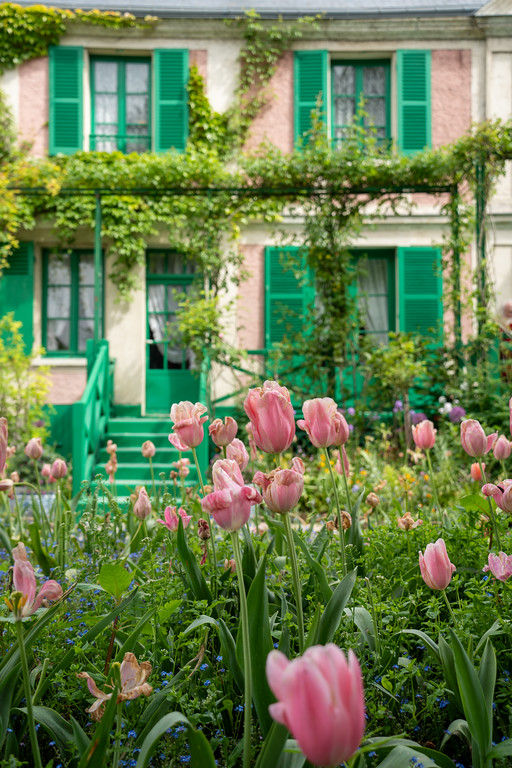
During my most recent trip to Paris, I finally visited Giverny, and I want to share what I learned about planning your own visit there. While you can join an organized tour to Giverny from Paris, you can also do it on your own, which offers greater flexibility to enjoy those stunning gardens at your leisure.
Read on for tips on how to plan your visit!
Planning the Perfect Giverny Day Trip
When to Visit Giverny
You can visit Giverny year-round, but keep in mind that Monet’s House and Gardens are only open from early April to the end of October (typically from April 1 to October 31).
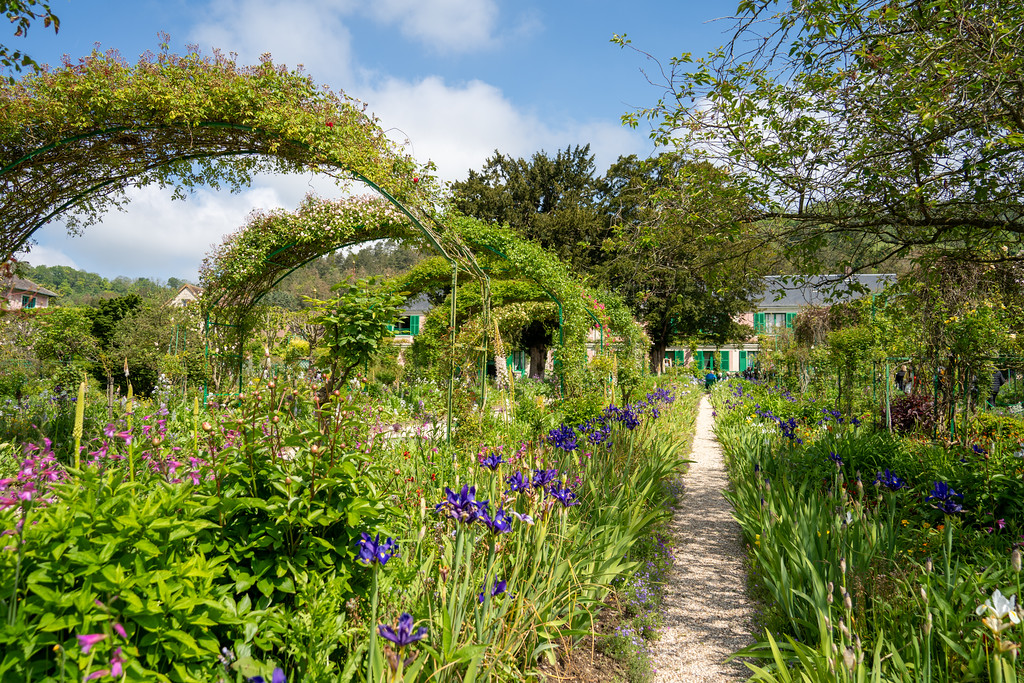
If you’re visiting Paris in the winter or early spring, I recommend against making a day trip to Giverny. (Since Monet’s House and Gardens are enclosed by walls, there isn’t much to see without going inside.)
From April to October, the house and gardens are open daily, and you can always expect flowers to be in bloom. If you want to see specific plants in Monet’s gardens, here are some general blooming periods:
- April: Tulips and Wisteria (sometimes late April)
- May: Wisteria (early May), Irises, and Rhododendrons
- June: Roses
- July: Water Lilies (second half of July)
- August: Water Lilies

In terms of which days are best to visit, Monet’s House and Gardens are generally busy, but going early on a weekday will allow for a less crowded experience.
Getting Tickets for Monet’s House
Monet’s House and Gardens are managed by the Fondation Monet, which is where you should purchase your tickets.
Advance purchase of tickets for Monet’s House and Gardens is not required, but it is highly recommended. Otherwise, you may spend over an hour waiting in line for tickets, which is not ideal!
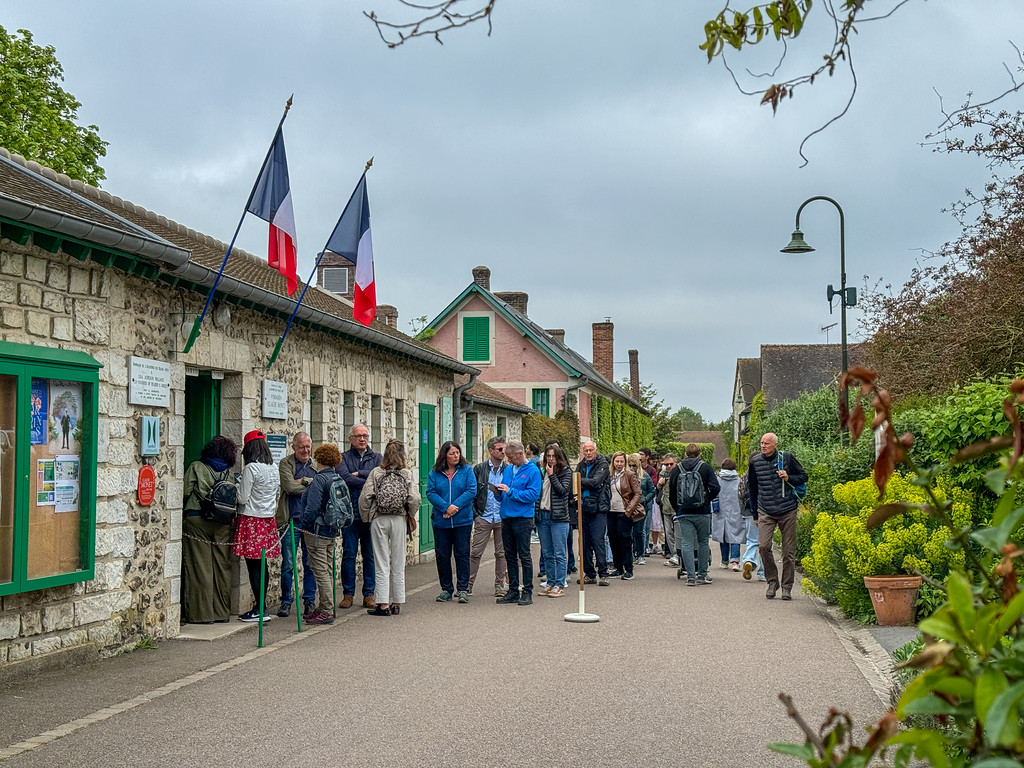
Once you have a date in mind for your visit to Giverny, go online here to pre-purchase your entry ticket. Tickets have specific time slots and typically cost €11.50 for adults.
Monet’s House and Gardens are open daily from 9:30 a.m. to 6 p.m. However, you should check train schedules from Paris to Vernon-Giverny before selecting your time slot to ensure you allow enough travel time (more on that in the next section!).
For my visit, I found that the best timing was the 10:30 a.m. slot, so that’s when I bought my ticket.
After selecting the number of tickets and your visit date/time, you’ll need to register on the site and complete your purchase using a credit card. There’s no need to print your e-ticket; simply save it on your phone and show it upon arrival. (More details on entry later, as pre-purchased tickets allow you to skip the long ticket line!)
NOTE: If you simply Google “Monet’s House tickets,” you’ll see varied results. The best place to obtain tickets is directly through the Fondation Monet website. Giverny.org also offers tickets, but they tend to be more expensive due to additional fees.
Getting to Giverny from Paris
For this self-guided day trip, let’s discuss how to reach Giverny from Paris! The journey involves a train, and although it may seem intimidating, it is quite manageable.
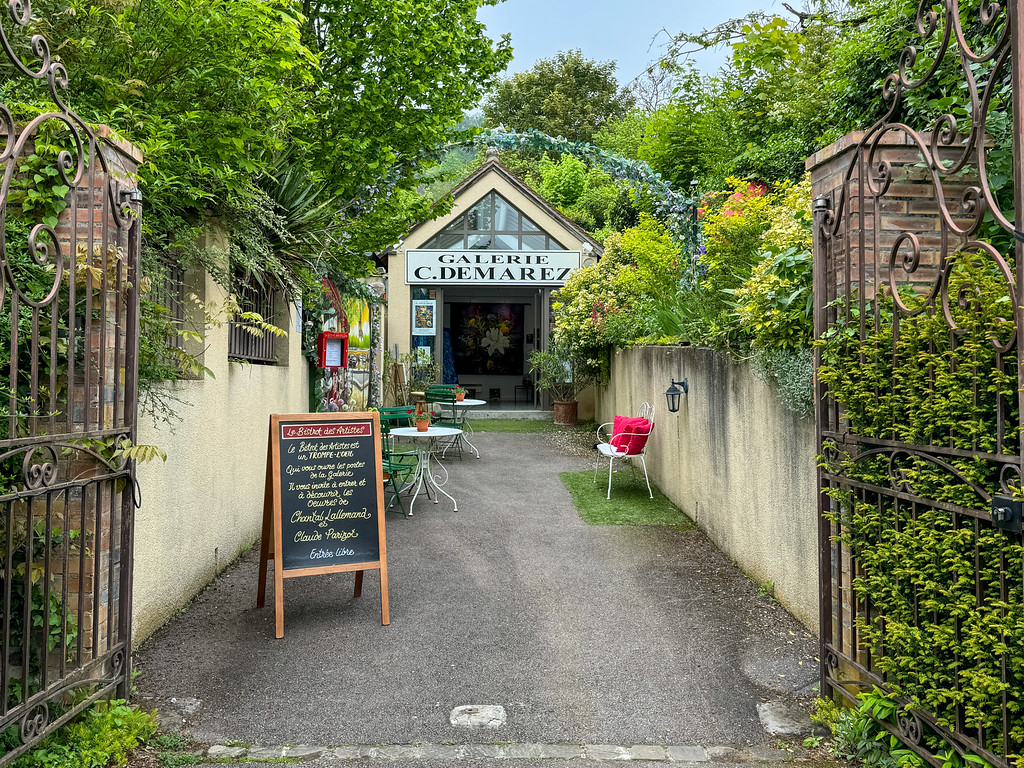
Taking the Train to Vernon-Giverny
You will need to take a regional TER train from Paris’ Saint-Lazare train station to Vernon-Giverny (the train station is situated in Vernon). This is a direct train (you won’t have to change trains) and several run daily from Paris. Saint-Lazare is accessible via multiple Paris Metro lines (3, 12, 13, and 14), making it easy to reach from anywhere in the city.
You can purchase your ticket to Vernon-Giverny at the train station using a kiosk or in advance via an app like Trainline. (Tickets do not sell out, but buying ahead can sometimes be more convenient.)
Before buying your entry ticket to Monet’s House, check the train times as they can vary throughout the day. For my trip, I took the 8:14 a.m. train from Saint-Lazare to ensure I arrived on time.
The train ride from Paris to Vernon takes around 50-60 minutes, with fares generally varying from €10 to €20 one-way (booking in advance offers cheaper rates). I booked my Paris-Vernon ticket ahead of time, but I held off on my return ticket to give me more flexibility in Giverny.
Taking the Giverny Shuttle
After arriving at the Vernon train station, use the pedestrian underpass to reach the station (do not try to exit through the fence beside the train). Your journey isn’t over yet, as Giverny is a couple of miles away from Vernon.
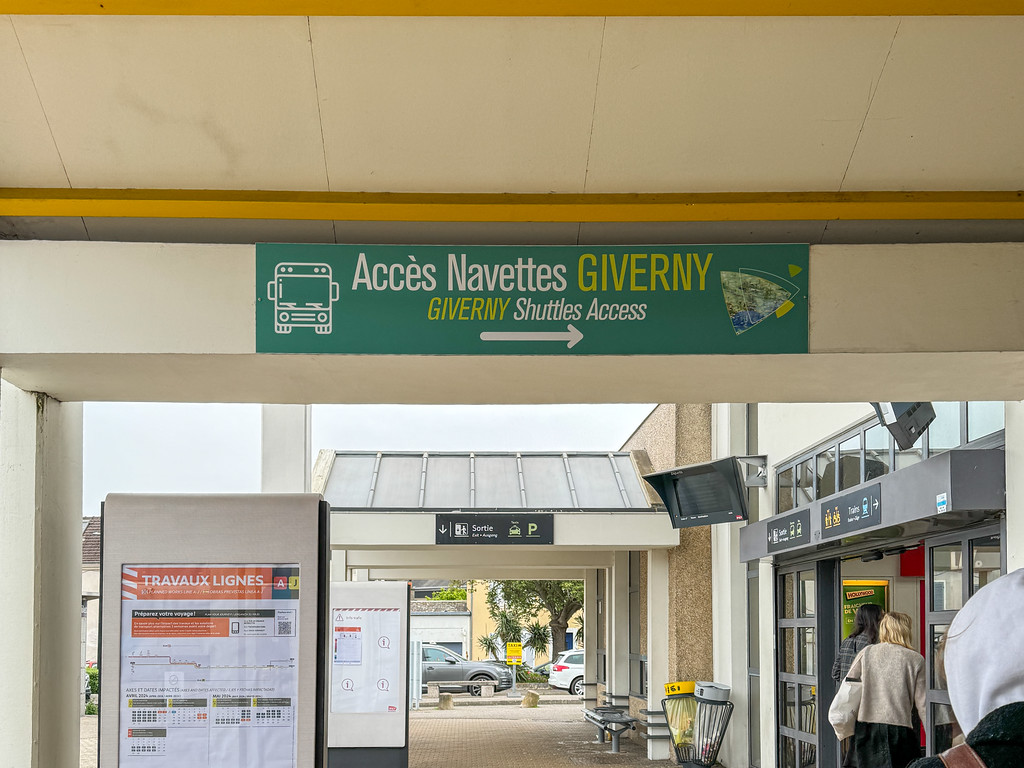
Giverny operates shuttle buses that connect Vernon to Giverny, timed to coincide with train arrivals/departures from Paris after about 9 a.m. Once you arrive at the train station, follow the signs for the Giverny shuttle or simply walk out the front and look for the line of buses adorned with Monet paintings.
A round-trip bus ticket between Vernon and Giverny costs €10 (€5 one-way), and you can pay in cash or by card when you board. There are usually enough buses to accommodate demand, so you don’t need to worry about nabbing a seat.

The bus ride to Giverny takes less than 15 minutes, and you will disembark in the primary public parking lot of the village. Be sure to check the bus return schedules posted at the stop, and I recommend taking a photo for your reference. (Typically, the bus times align with train schedules back to Paris, with some leeway included.)
How to Reach Monet’s House
From the bus parking area, it’s approximately a 10-minute walk into the village of Giverny (a map with estimated walking times is conveniently located near the bus stop). You can easily follow the crowd, as many people will be heading to the same destination.
Once you arrive at Monet’s House, pay attention! You are NOT required to stand in the long ticket line at the main entrance since you have already purchased your ticket online. If you did not pre-book, you will have to wait in line.
Look for signs directing you to “Porte 1” and “Porte 1bis,” guiding you down a small lane located before the main ticket line. Porte 1 is for groups, while Porte 1bis is for those with a “Entree Coupe File” or “Entry With Pass” – that’s you! At the end of this lane, there is an entry gate in the stone wall where your ticket will be scanned.
(There will be signs, but they are small and easily overlooked, so the provided photos are here to assist you!)
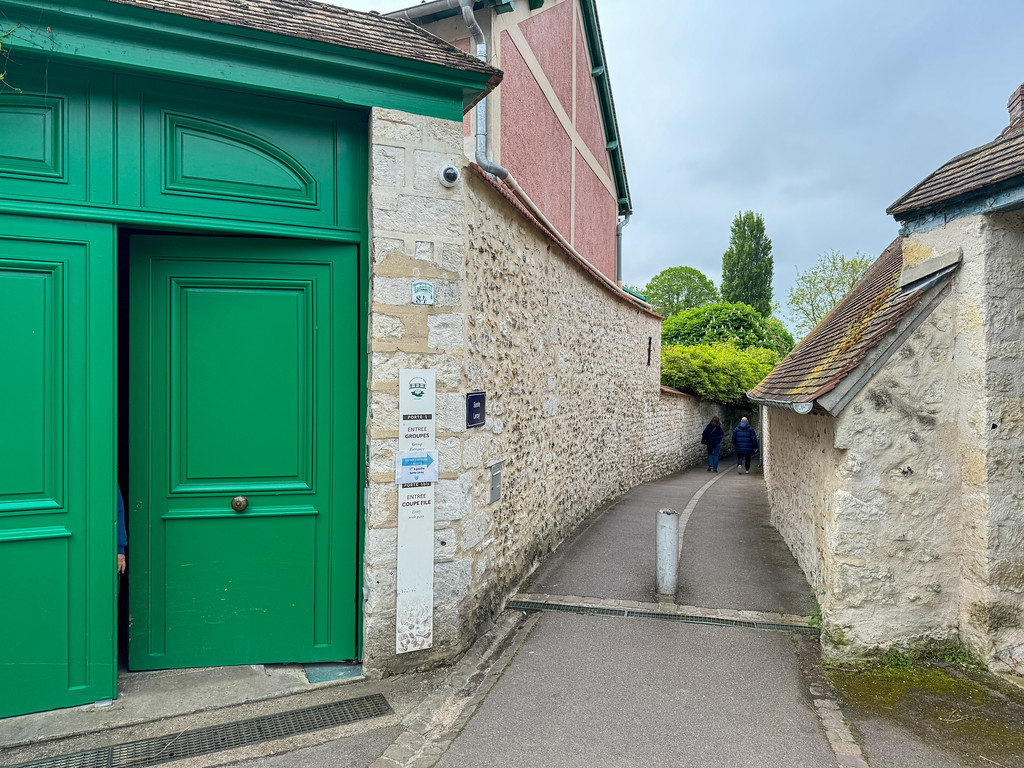
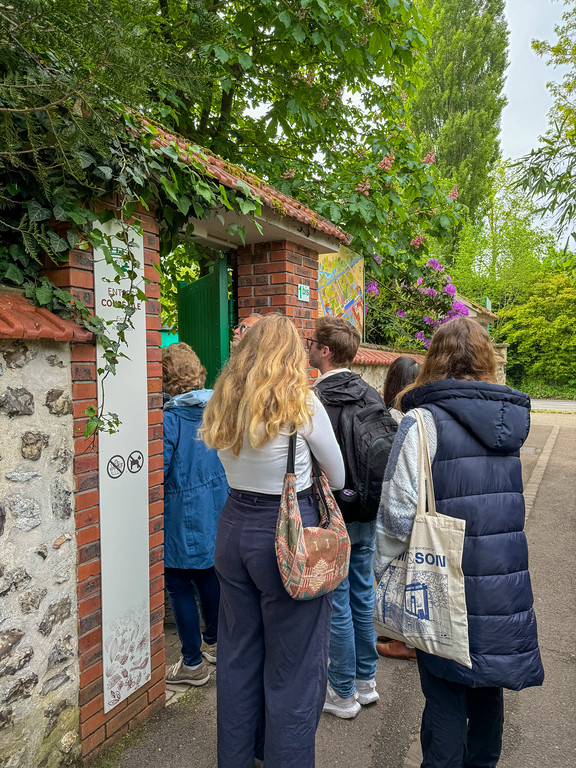
You will enter from the back corner of the main flower garden, known as the Clos Normand, at Monet’s House. From there, you’re free to explore at your leisure!
Things to Do at Monet’s House and Gardens
Once inside, there are three primary areas to explore: Monet’s House, the Clos Normand flower garden, and the water garden. You can visit these in any order, and without the constraints of a guided tour, you can spend as long as you wish in each area.
Clos Normand Flower Garden
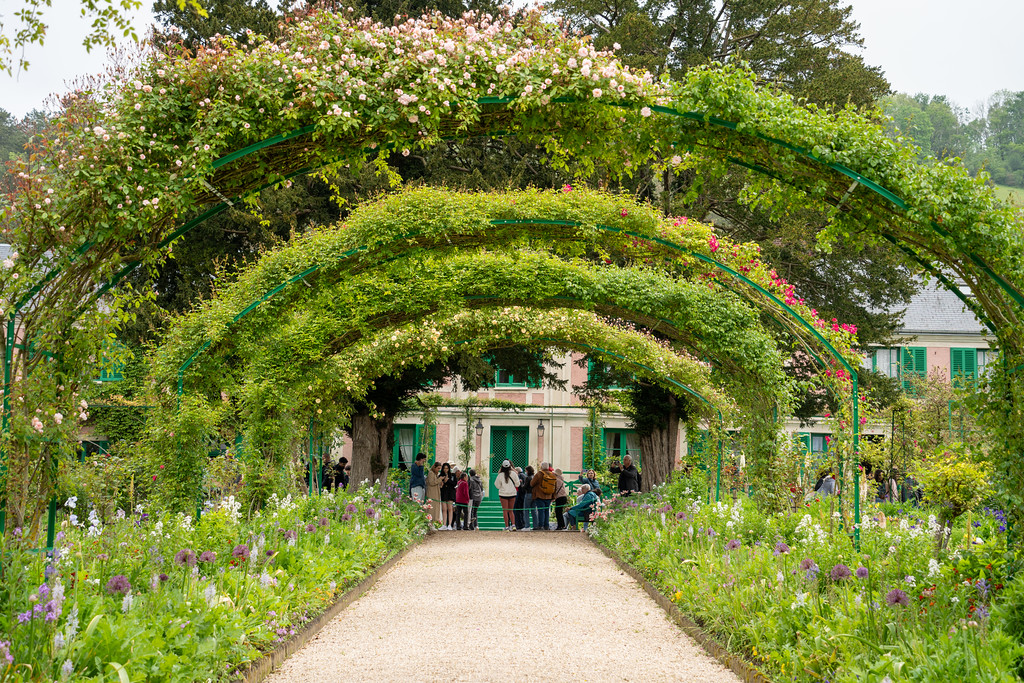
You’ll start in the main flower garden, which is always vibrant with colors, regardless of when you visit. This was the garden that came with the house when Monet bought it in 1883, but at that time, it was merely an apple orchard and a kitchen garden.
Over the years, Monet transformed it into his dream garden, filled with a variety of plants and flowers. (Indeed, Monet was both a passionate gardener and painter!)
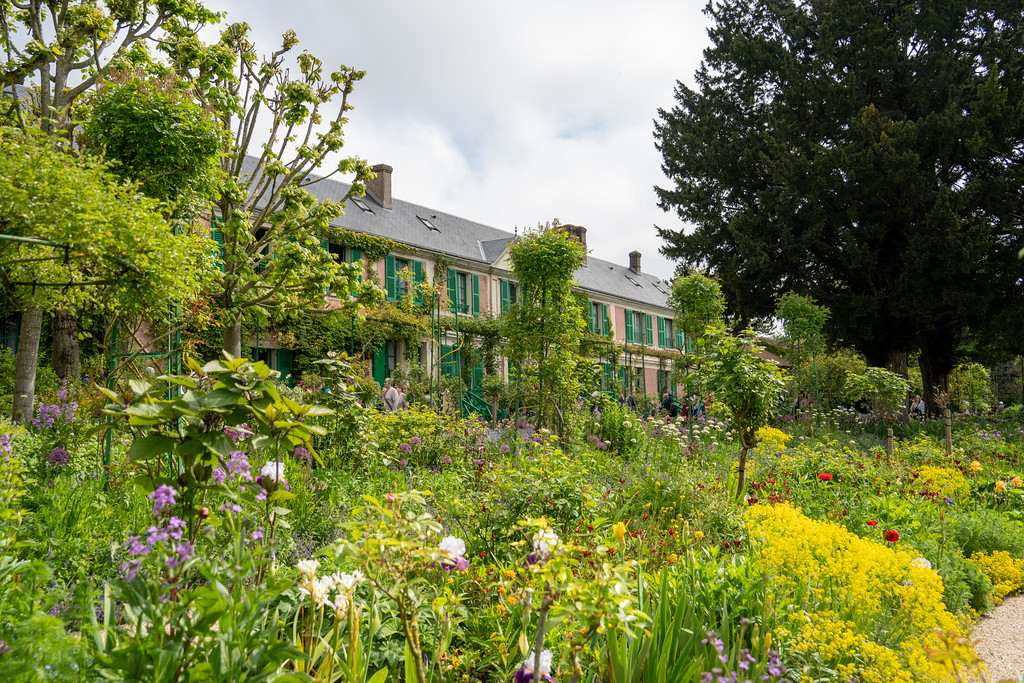
Please be aware that not all paths in this garden are open to foot traffic, so do respect any closed or restricted areas. Of course, avoid trampling any flowers!
Monet’s House
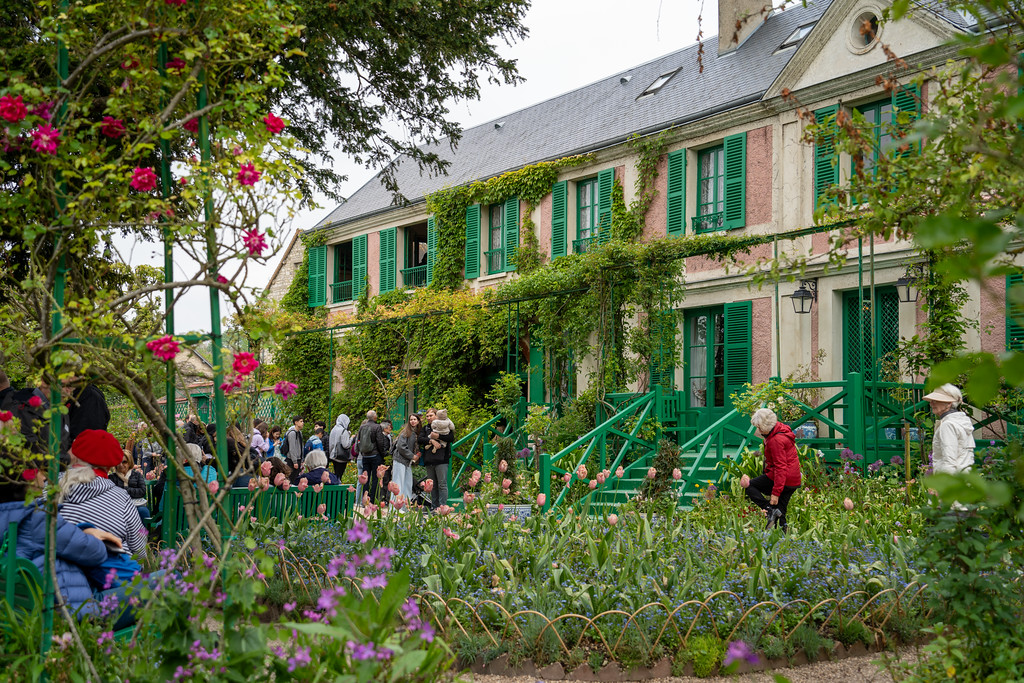
The distinctive pink and green house at the end of the Clos Normand garden is where Monet lived with his second wife, Alice, and their combined eight children. There will likely be a queue to enter the house, but it generally moves quickly, and it’s definitely worth a visit.
Inside, the house is bright and inviting, mostly designed by Monet himself! You can explore both floors, including restored rooms such as Monet’s studio and bedroom, as well as the cheerful yellow dining room and serene blue kitchen.
The house is adorned with art prints, showcasing both Monet’s work and that of other artists.
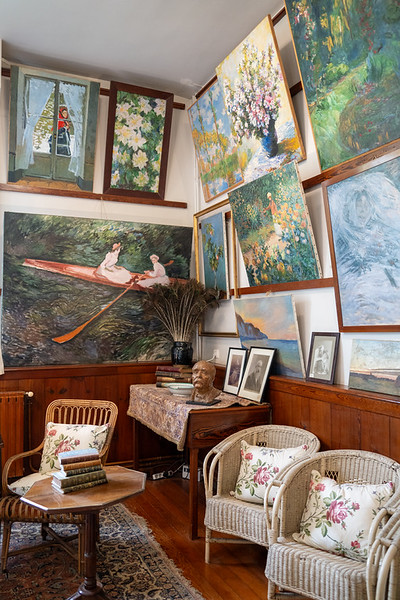
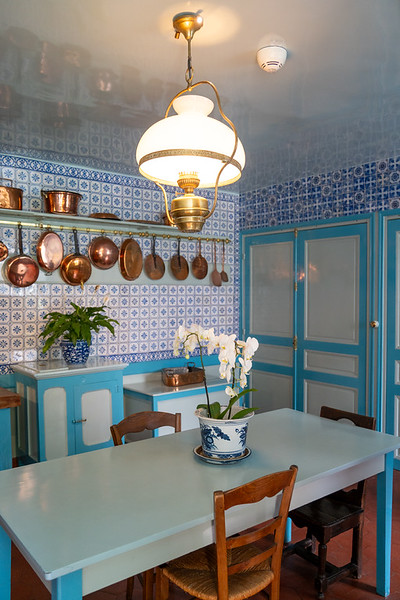
Water Garden
The water garden, or Japanese garden, is undoubtedly the most famous part of Monet’s estate, featuring the iconic water lily pond. Monet created this garden in the 1890s by diverting a small stream into the area.
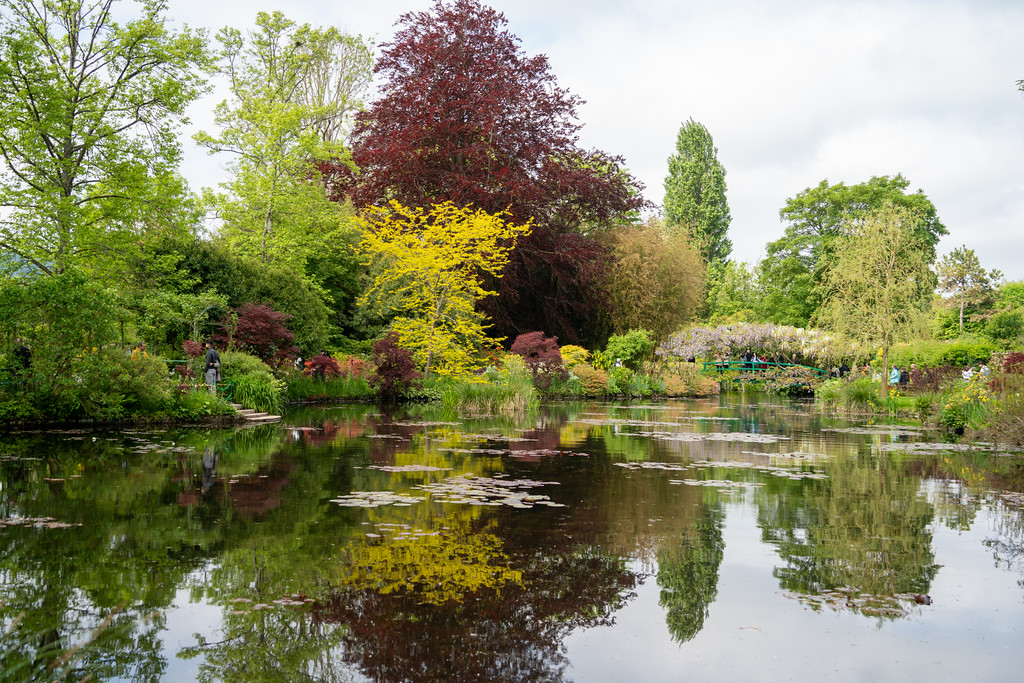
The water lily pond is only in bloom during July and August, so if you’re aiming to see those, plan accordingly. The garden also features bamboo, a traditional Japanese bridge (which is draped in wisteria during spring), weeping willows, and several tranquil walking paths. Though it can be busy with other visitors trying to capture the perfect photograph, the beauty of the area is undeniable.
This is also where Monet began painting his renowned Water Lilies series in 1897.
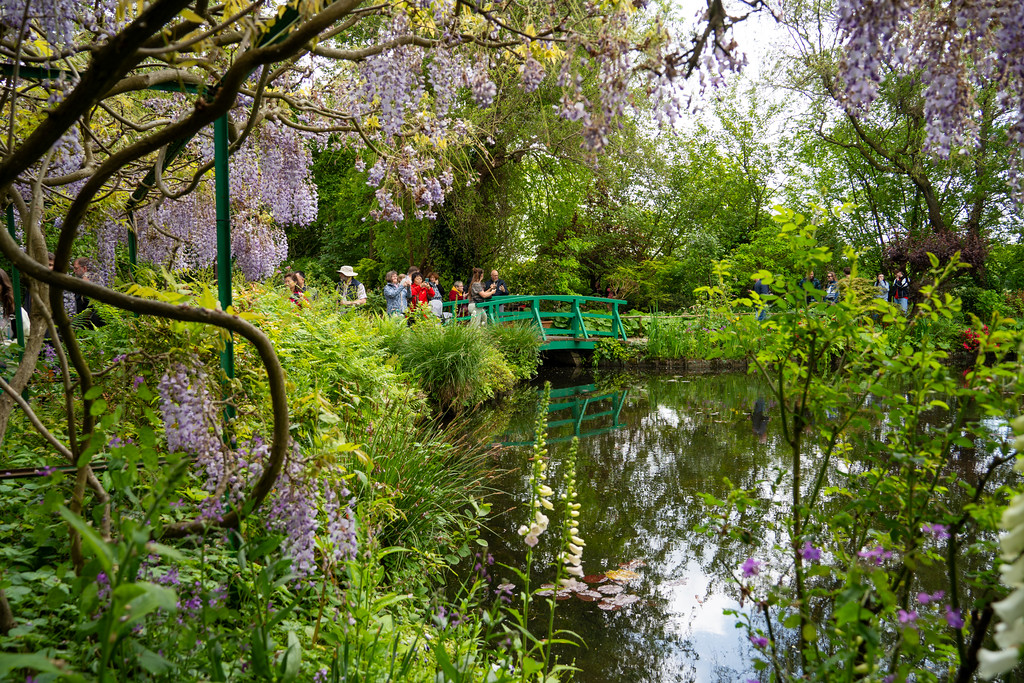
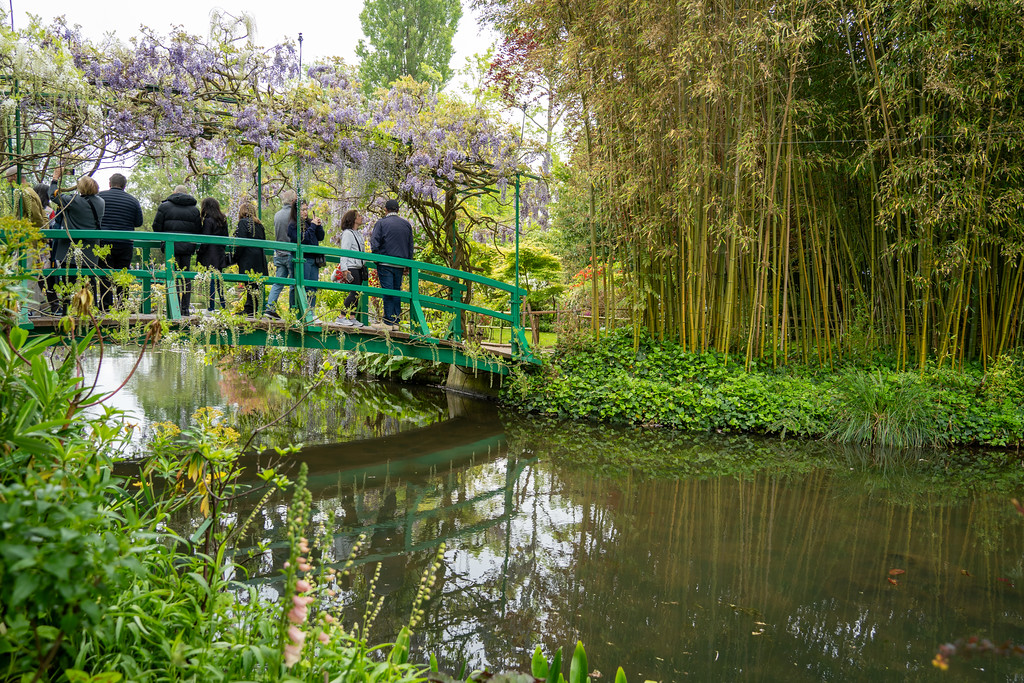
NOTE: Painting or sketching in the gardens is not permitted, so if you feel inspired by Monet while you’re there, it’s best to leave the art supplies at home. However, taking endless photos is absolutely allowed!
How Much Time to Spend at Monet’s House and Gardens
You can spend as much time here as you wish, but typically a couple of hours is more than sufficient. I spent around two hours leisurely exploring the house and gardens, walking through each garden area twice. Most guided tours allocate less time, which is a significant advantage of visiting on your own.
Other Things to Do in Giverny
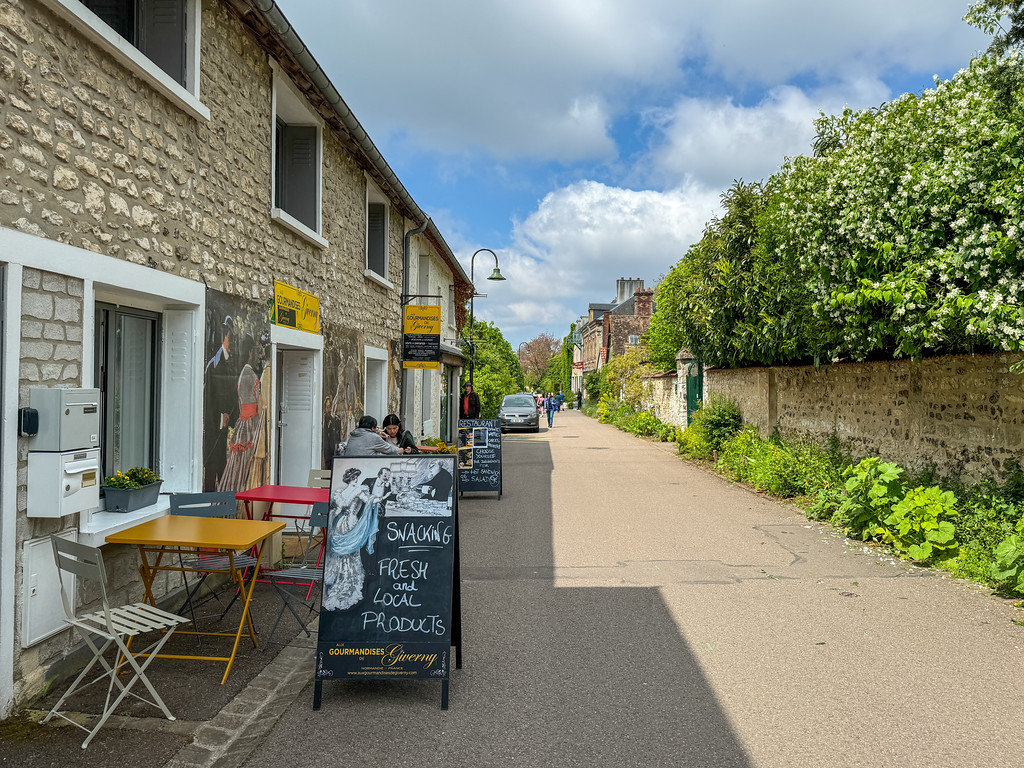
Once you’ve finished at the gardens, be sure to check out the gift shop before leaving Monet’s House and Gardens. Then, take a stroll around the village of Giverny. Other activities include:
- Visiting the Museum of Impressionisms, which features art dedicated to the Impressionist movement with rotating exhibits and another beautiful garden.
- Enjoying lunch in the village – I had a delicious sandwich from Gourmandises de Giverny.
- Paying respects at Monet’s grave, located in the cemetery behind the Giverny Church.
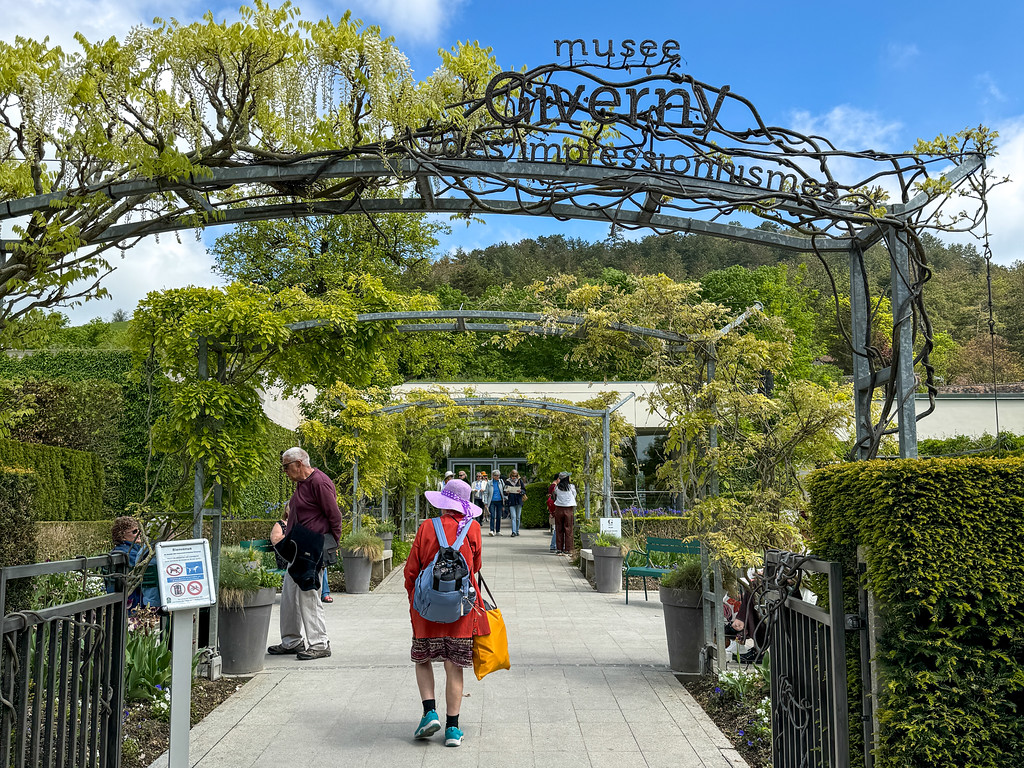
Returning to Paris by Train
Once you have explored Giverny, you can catch the train back to Paris. Again, check train schedules in advance, as there may be gaps in the afternoon service.
To return, retrace your steps: go back to the parking lot to catch the shuttle bus to Vernon. From there, you can buy a train ticket from the ticket counter or use the Trainline app again. The train ride back to Paris at Saint-Lazare takes about an hour.
And that concludes your day trip to Giverny!
A Perfect Giverny Day Trip Itinerary
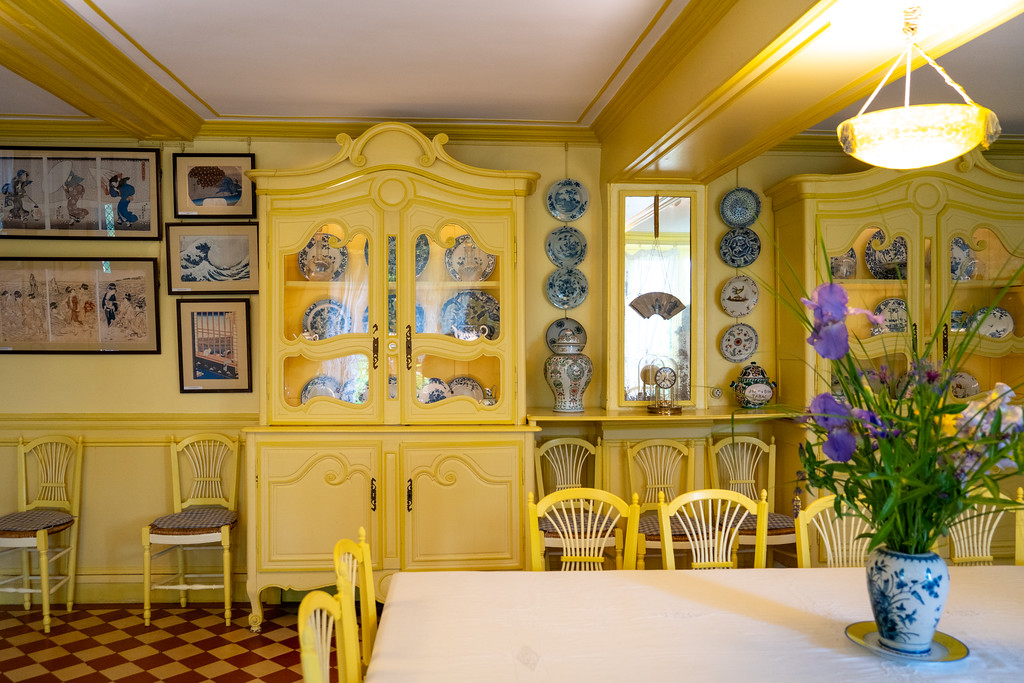
Here’s a detailed itinerary for my weekday day trip to Giverny (note that weekend train/shuttle times may differ slightly):
- 8:14 a.m. – Train from Paris Saint-Lazare to Vernon-Giverny
- 9:04 a.m. – Arrival in Vernon
- 9:25 a.m. – Shuttle bus to Giverny
- 10:30 a.m. – Entry to Monet’s House and Gardens
- 10:30 a.m.-12:30 p.m. – Explore Monet’s House and Gardens
- 12:30 p.m. – Lunch and exploration in Giverny
- 3:10 p.m.* – Shuttle bus back to Vernon train station
- 3:40 p.m.* – Train back to Paris
*If you prefer to return to Paris earlier, there’s usually a train around 1:50 p.m. on weekdays.
Giverny Tours from Paris
If you’ve reconsidered doing this trip independently, that’s perfectly okay! There are numerous guided tours available from Paris, some of which combine a visit to Giverny with other attractions.
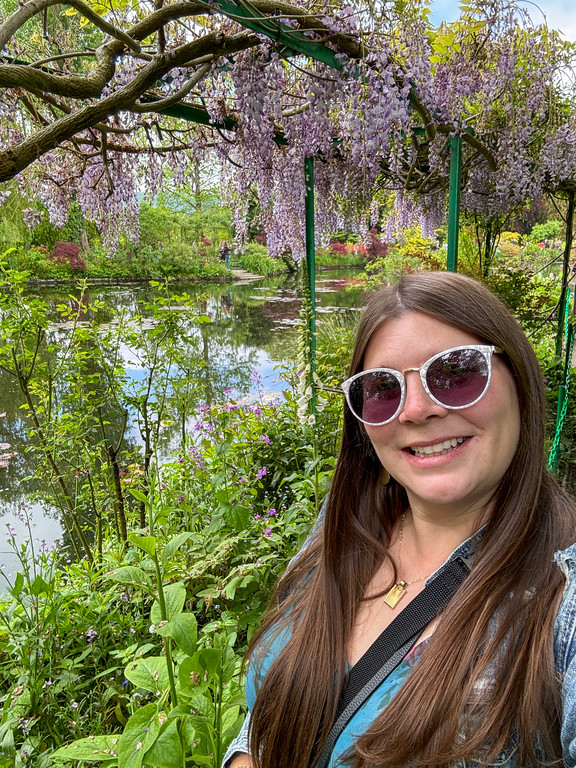
Here are some esteemed Giverny tours to consider:
Who’s ready to take a day trip to Giverny and experience Monet’s inspiration?

Amanda Williams is the award-winning blogger behind A Dangerous Business Travel Blog. She has traveled to over 60 countries on six continents from her home base in Ohio, focusing on experiential and thoughtful travel throughout the US, Europe, and beyond. Amanda shares recommendations based solely on her personal experiences and visits to the places she writes about!



